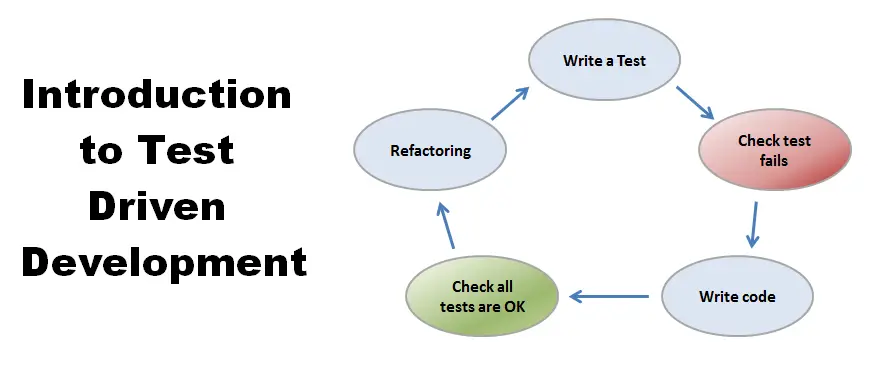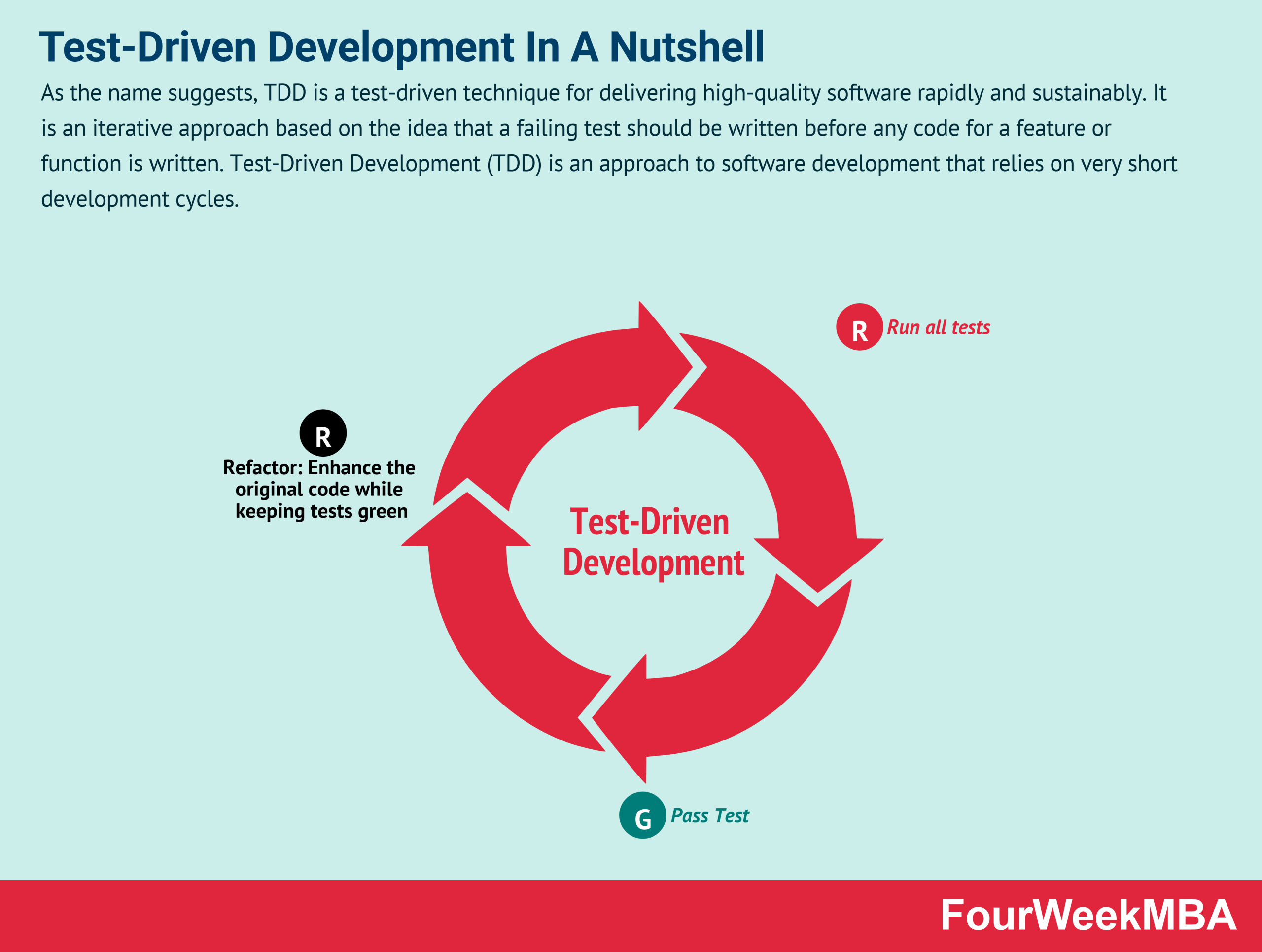Introduction to Test-Driven Development (TDD)

Test-driven development (TDD) is a software development process that relies on writing software tests before writing any actual code. The idea behind TDD is that if you can write a test that will check for a specific behavior, then you can ensure that the code you write will exhibit that behavior. TDD helps to prevent errors by making sure that your code does what you intend it to do. The TDD process consists of three steps:

- Write a test. The first step in TDD is to write a test that checks for a specific behavior. This test should be written before any actual code is written.
- Make the test pass. The next step is to write code that makes the test pass. This code should be written in the most efficient and readable way possible.
- Refactor the code. Once the test passes, you can refactor the code to make it more readable and maintainable. This step is important for keeping your codebase clean and well-organized.
TDD is a powerful technique that can help you to write better code more efficiently. By writing tests before you write any actual code, you can ensure that your code does what you intend it to do. TDD also helps to prevent errors by making sure that your code meets your requirements.## Introduction To Test-driven Development (TDD)

Executive Summary
Test-driven development (TDD) is a software development process that relies on writing automated tests before writing the actual code. This approach helps ensure that the code is correct and meets the specified requirements. TDD is an iterative process that involves writing a test, running the test, and then writing the code to make the test pass. This process is repeated until all the requirements are met.
Introduction
Test-driven development (TDD) is a software development process that emphasizes writing tests before writing code. This approach helps to ensure that the code is correct and meets the requirements. TDD is an iterative process that involves writing a test, running the test, and then writing the code to make the test pass. This process is repeated until all the requirements are met.
Five Advantages of Using TDD
1. Improved code quality
TDD helps to ensure that the code is correct and meets the specified requirements. By writing tests before writing code, developers can identify and fix errors early in the development process. This helps to reduce the number of bugs in the final product.
2. Increased confidence in the code
TDD gives developers confidence that the code is correct. This is because the tests provide a safety net that ensures that the code is working as expected. This confidence can lead to faster development and fewer errors in the future.
3. Improved design
TDD helps to improve the design of the code. By writing tests before writing code, developers are forced to think about the requirements of the code and how it will be used. This can lead to a more modular and maintainable codebase.
4. Faster development
TDD can actually help to speed up development. This is because the tests provide a safety net that allows developers to refactor the code without fear of breaking it. This can lead to faster development and a more stable product.
5. Reduced maintenance costs
TDD can help to reduce maintenance costs. This is because the tests provide a safety net that ensures that the code is working as expected. This can help to reduce the number of bug fixes and other maintenance tasks that need to be performed.
Five Disadvantages of Using TDD
1. Increased development time
TDD can increase development time. This is because it takes time to write and maintain the tests. However, the increased development time can be offset by the benefits of TDD, such as improved code quality and increased confidence in the code.
2. Can be difficult to learn
TDD can be difficult to learn, especially for developers who are new to the concept. However, there are many resources available to help developers learn TDD.
3. Can be difficult to apply to legacy code
TDD can be difficult to apply to legacy code. This is because legacy code is often not designed with testing in mind. However, it is possible to apply TDD to legacy code by refactoring the code into a more testable form.
4. Can be difficult to use with certain types of code
TDD can be difficult to use with certain types of code, such as GUI code. This is because GUI code is often difficult to test. However, there are techniques that can be used to test GUI code.
5. Can be difficult to scale
TDD can be difficult to scale to large projects. This is because the number of tests can become very large and difficult to manage. However, there are techniques that can be used to scale TDD to large projects.
Conclusion
TDD is a software development process that can help to improve the quality of the code, increase confidence in the code, improve the design of the code, speed up development, and reduce maintenance costs. TDD is not without its drawbacks, but the benefits of TDD can outweigh the drawbacks.
Keyword Tags
- Test-driven development
- Software development
- Agile development
- Code quality
- Testing

Test-driven development (TDD) is a great way to write bug-free code. I’ve been using it for years and I’ve never looked back.
TDD is a waste of time. It slows down development and doesn’t actually improve the quality of the code.
TDD is a great tool for catching bugs early in the development process. It can help you to identify and fix problems before they become major issues.
I’m not sure if TDD is really worth the effort. It can be a lot of work to write all those tests, and I’m not convinced that it actually makes the code any better.
TDD is like a magic wand for writing bug-free code. It’s the best thing since sliced bread!
TDD is like a straitjacket for developers. It stifles creativity and makes it impossible to write good code.
TDD is like a game of ping-pong. You keep hitting the ball back and forth until you finally win.
TDD is a great way to learn about the design of your code. It forces you to think about the different ways that your code can be used.
TDD is a waste of time for small projects. It’s only worth it for large, complex projects.